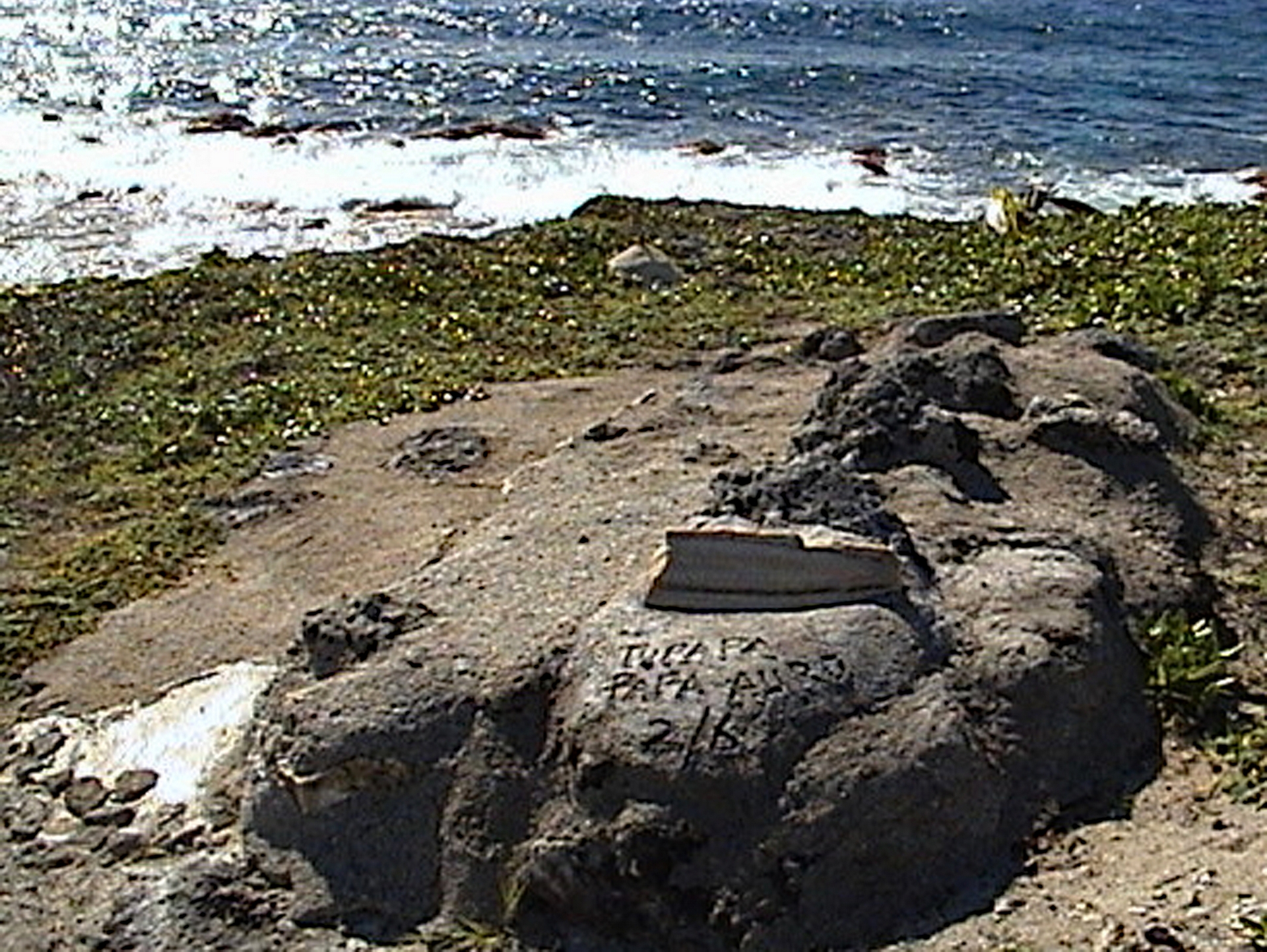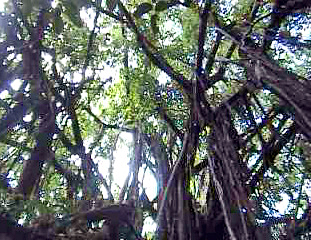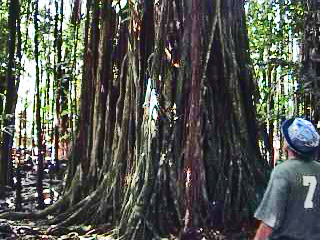MAUKE
Garden of the Cook Islands
Photo: Marcel Teraimana Tua
A world away from Rarotonga in landscape and lifestyle
Warm and welcoming islanders
- The most easterly of the Cook Islands and half the size of Rarotonga in circumfrence (18 kms, 11.25 miles)
- Also known as Akatokamanava (the place where my heart rested)
- The European discoverer was English missionary, the Rev. John Williams who landed there on 23 June, 1823
- A central volcanic plateau is surrounded by a ring of jagged, razor-sharp fossilised coral (makatea) which reaches up to 1,000 metres inland
LOCATION: 277 kms/172 mls East North East of Rarotonga
ACCESS: Several flights a week from Rarotonga
POPULATION: 249
LAND AREA: 67.1 sq.kms/25.9 sq. mls
GETTING THERE

Mauke is about 45 minutes flying time from Rarotonga. Air Rarotonga have flights on Monday and Friday, at 1330 and 1440. The earlier (1330) flight goes on to Mitiaro before returning to Rarotonga. And there always seem to be plenty of the island's youngsters around to greet the twice weekly service. Tourism is still in its infancy and accommodation is limited to rooms for just 40 visitors
WHAT TO EXPECT
Plants and flowers seem to be everywhere thriving in the rich soil. The island is divided into four districts - Ngatiarua, Vaimutu, Areora and Makatea - two of which are split into their own sub-districts. But walking or cycling around the island, you'd be hard pressed to work out where one ends and another begins. Wherever you go though, you can expect great warmth and hospitality - 'ui tupuna' as islanders call it
THE STRANGE STORY OF THE DIVIDED CHURCH
Almost dead centre of the island is a large
white church with two separate concrete paths and two entrance archways. One is for the village of Ngatiarua and the other for the neighbouring
village of Areroa. The Ngatiarua archway is 9 metres (30 feet) high and topped with three crosses. The Areroa entrance has two spearlike columns topped with figures whose (now eroded) heads represented the first European women to come to the islands. The black and white photo (dated to around 1900) shows those columns used to be joined together. The two villages got together and agreed on the
design and the builder, but the trouble began after the walls were
completed
Neither could agree on the design of the interior,
with the result that a wall was built across the middle of the church
cutting it into two squares. Each village then completed its side to its
own design. The pulpit, meanwhile, was placed against the middle wall. And to this day it has has a clear line down the
middle of its platform and the speaker is expected to have one foot on
each side of the line! But the warfare went on. When one village
worshipped, the other played loud games on the field outside.
Finally, a new pastor convinced the two villages that
they should worship under one roof at the same time. The centre wall
came down, but two distinct interior designs remained. One side was
white, yellow and red, and the other, pink, yellow and white with white
diagrams and circles.
Sadly, this was all painted over in pale blue and
white in the 1990s but amazing work by islanders and their families and friends saw the church restored to its
former colourful glory in 2008 as you can see from these pictures. Some of the early differences of opinion though are evident to this day in the structural design. One half of the roof is high and open with elaborate ornamentation between the arches. The other is a flat Gothic and plain boarded. And if you turn your eyes to the floor, one half has wide floor boards while the other half has narrow ones
A close up of the restored paintwork today..
... and what it was like for years when it was all overpainted in blue and white. The original paint is just visible underneath on this column
Nine silver coins from Chile are embedded in front of the pulpit. Eight are pesos dated between 1870 and 1881. The ninth is an unidentified "sol". Chilean coins were common currency in the Pacific in the 19th century
The rainbow colours are echoed in the stained glass windows
Small Island...
BIG tree
Hidden deep in the interior of the island is what's believed to be the world's largest banyan tree, and you can swing from it like Tarzan! It's thought to cover more than a 4,000 sq. metres (43,000 sq. ft) - and it's still spreading
A professor from Leeds University in England, who's an expert on the trees, has seen it and he says its the biggest!
MAUKE'S WHALE RIDER LOVE STORY

High on the cliffs above Araiti Cove, legend says that the beautiful Kea watched while her husband, Paikea fished beyond the reef. Paikea was a great fisherman, but one day as he was about to head for home, he was swept up in a hurricane which carried him out to sea. He ended up alive on Mangaia, but Kea died on the rock. She was convinced her beloved husband was dead and she cried so much for him that she couldn't eat. Maori legend talks of Paikea riding a whale to safety - as in the film "Whale Rider" - but Mauke legend doesn't mention this. Kea's remains were uncovered in 2003 in the same spot where legend says she waited. Her grave is a sacred site
FIND OUT MORE ABOUT WHAT MAKES MAUKE MAGICAL

Discover underground caves, learn about the "secret industry" at the heart of the island, and see where you can stay
CLICK HERE TO CARRY ON EXPLORING MAUKE
Photo: Marcel Teraimana Tua who's lived most of his life on Mauke
TAKING THE 10 MINUTE TOUR?

CLICK THE ICON TO CONTINUE





